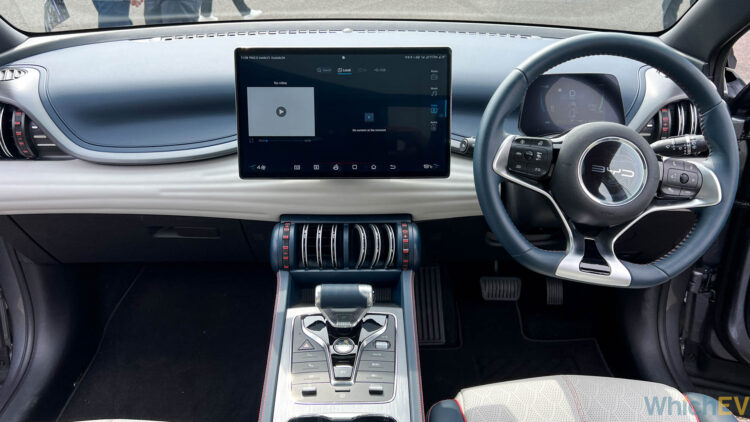According to a recent report from IDC, the global electric vehicle (EV) market is growing at a rapid pace. In 2022, the worldwide EV market reached nearly 11 million units, with a market penetration rate of over 15%. Now, the market is on track to reach the 12 million mark. This growth is attributed to the trends of electrification, connectivity, autonomous driving, and ride-sharing in the automotive industry.
IDC is a prominent provider of market statistics for industries worldwide, and its data is frequently used by major manufacturers for production planning. The report reveals that China is leading the way in EV adoption, with the country’s EV market reaching almost 7 million units and a penetration rate of over 31% in 2022. This growth is fueled by improved supply, high oil prices, government subsidies, and price-guaranteed promotions by car companies.
The top three players in the global EV market, BYD, Tesla, and SAIC-GM Wuling, hold a 36.11% market share. In China, the top three players, BYD, SAIC, and Tesla, occupy 53% of the market. Interestingly, local brands dominate the top 10 players in the Chinese market, with Tesla being the only non-local brand in the third position with a 10.3% market share.
IDC offers several pointers for major manufacturers in the EV sector. They recommend investing in the most valuable markets, such as China, Europe, and North America, while also considering potential opportunities in developing countries. It’s crucial for automobile enterprises to define their goals and positioning and choose the right development path. OEMs should also focus on choosing the most suitable technological route, increasing investment in research and development, and enhancing their software capabilities. Additionally, building a resilient and agile supply chain and attracting top talent are essential strategies for success.
The report concludes that the industry transition will be fast, and only by establishing an advantage in advance can players stay ahead of their competitors and achieve victory. The influence of companies like SAIC, Tesla, and BYD on the market is significant.
In addition to the report’s findings, the article mentions the ATTO 3 and Dolphin electric vehicles from BYD, expressing excitement about the upcoming ultra-low-cost Seagull model. The article also highlights the increasing complexity of production in China, making it the preferred choice for many high-tech companies.
Overall, the IDC report emphasizes the rapid growth of the global EV market and provides insights and recommendations for stakeholders in the industry.
IDC Reveals Global Electric Vehicle Market Approaches 12 Million Milestone
In a recent report, the International Data Corporation (IDC) has revealed that the global electric vehicle (EV) market is rapidly approaching the 12 million unit milestone. This significant milestone showcases the growing acceptance and adoption of electric vehicles worldwide, highlighting a shift towards sustainable transportation solutions.
The IDC report indicates that the global EV market has witnessed a compound annual growth rate of approximately 43% over the past five years. This remarkable growth can be attributed to several factors, including advancements in battery technology, government incentives, and increased environmental awareness amongst consumers.
One of the primary driving forces behind the expansion of the EV market has been the continuous improvement in battery technology. The substantial evolution of battery storage, coupled with a significant decline in manufacturing costs, has made EVs more affordable and accessible to consumers. As a result, electric vehicles have become a viable alternative to conventional fossil fuel-powered vehicles.
Government support and initiatives aimed at reducing greenhouse gas emissions have also played a crucial role in spurring the growth of the EV market. Countries around the globe have introduced various incentives such as tax credits, subsidies, and infrastructure investments to encourage consumers to transition to electric vehicles. These measures have not only eased the financial burden on potential buyers but have also accelerated the development of charging infrastructure, addressing concerns about EV range anxiety.
Moreover, an increasing awareness of the environmental impact of traditional vehicles has led to a shift in consumer preferences. With global warming and climate change becoming significant concerns, consumers are opting for greener alternatives. EVs, being emission-free during operation, offer a sustainable and eco-friendly means of transportation. This growing environmental consciousness has resulted in a surge in demand for electric vehicles.
While the report celebrates the significant progress made in the EV market, it underscores the need for sustained efforts to further accelerate the transition to electric vehicles. One of the challenges faced by the industry is ensuring an adequate charging infrastructure to meet the increasing demand for EVs. Governments, in collaboration with private sector players, must invest in expanding and improving charging networks to alleviate range anxiety and bolster consumer confidence further.
Additionally, continuous research and development in battery technology are crucial to enhance the overall performance and range of electric vehicles. Identifying and resolving potential barriers, such as limited charging times and high upfront costs, are essential to achieving mass-market adoption of EVs.
In conclusion, the IDC’s report highlights the remarkable growth and increasing acceptance of electric vehicles worldwide. With the global EV market approaching the 12 million unit milestone, it is evident that the transition towards sustainable transportation solutions is well underway. The continuous evolution of battery technology, government support, and growing environmental awareness among consumers are key factors driving this rapid expansion. However, there is still work to be done in terms of charging infrastructure and technological advancements. As we move forward, it is crucial for governments, industry stakeholders, and consumers to collaborate to overcome the remaining challenges and accelerate the electrification of the global automotive industry.

